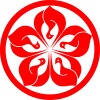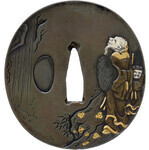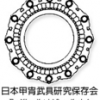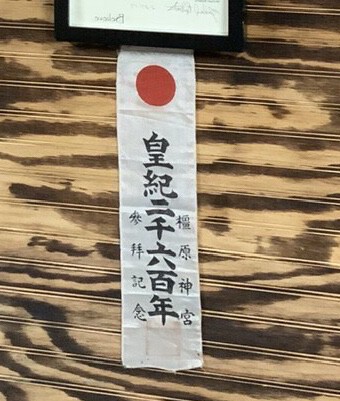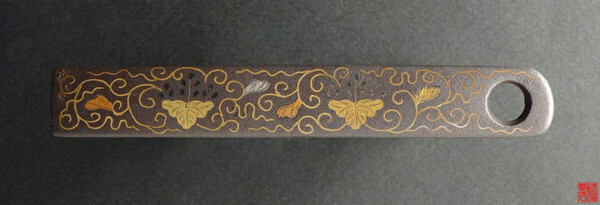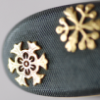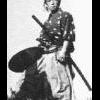Leaderboard
Popular Content
Showing content with the highest reputation on 10/25/2020 in Posts
-
6 points
-
5 points
-
When I started collecting Gunto, I had a corner of my room dedicated to WW2 Japanese swords, with a back drop of a soldiers signed personal flag, and a going to war banner. These banners celebrated a family or communities pride in sending a loved one off to war. They look great as a wall decoration behind your swords. Beautiful calligraphy on silk. Any one interested can find them in the for sale section.4 points
-
3 points
-
3 points
-
3 points
-
2 points
-
2 points
-
2 points
-
You find some poems in that book. The nobility of failure by Ivan Morris The longest chapter is about WW2 Kamikaze with a lot ouf background that many never had heard.2 points
-
2 points
-
The sword is a family heirloom, rather than a newly-made arsenal sword. The bearer had military mounts made for his family sword. There are many such short swords repurposed for military use. They are often erroneously referred to as "pilot's swords", with the assumption being that pilots would use shorter swords, but I think this site has disproven that claim fairly comprehensively. The inscription (the ones in blue are written by the cutting tester) 乳割土壇払 Chichi-wari dotanbarai 天保十年二月日於江府作 Tenpō jūnen nigatsujitsu oite Kōfu saku 会津住元興 Aizu-jū Moto-oki 同年十月二日於千住神谷清治試之 Dōnen jūgatsu futsuka, oite Senjū Kamiya Kiyoharu tamesu kore Cut across the chest Made in Tenpō 10 (1839) February, Kōfu Moto-oki from Aizu province/city Cutting test performed in the same year, October 2nd, at Senjū, by tester Kamiya Kiyohara So the swordsmith Moto-oki made this sword in February of 1839, and someone had it tested by cutting it across the chest of a cadaver (probably) in October of 1839. I didn't find this tester's name in Guido's list of famous testers, or anywhere else on the internet, so it looks like the tester is someone lost to history. It also looks like the tester didn't have room to write everything on one side, so he continued on the other side, which is slightly unusual. The longer sword is a typical military/arsenal blade.2 points
-
I thought that an unusual feature this 1000 monkey tsuba might be of interest. You might like to go straight to the pics and see if you can spot it. But first, for those unfamiliar with 1000 monkeys, some background info on this type of tsuba that I gleaned from literature (I’m no authority and much was taken from an excellent article by Robert Burawoy, Bushido, 3, number 1 p18-21). Makers: I believe that this design of tsuba originated with the three Mitsuhiro tsubako (father, brother and son) who lived in Yagami, a part of Nagasaki in the 18th and 19thC. Mitsuhiro I probably studied at the Nanban School in Nagasaki before moving to Yagami in Hizen province. The Nanban influence can be seen in the tsuba which is rather stiff and flat in design compared to Mitsuhiro II (regarded as far the best and died in 1823, aged 75) who’s monkeys are rounded and vary in both size and activity. Mitsuhiro III (died in the Meiji period aged 70) did not produce many works and these were like his father’s. Their works tend to be signed Hishu or Hizen Yagami Ju Mitsuhiro and they worked in both iron and brass (sentoku). This tsuba is mumei (unsigned) and may not have been made by any of the Mitsuhiro’s, as others copied their work. 1000 animal tsuba: I’ve seen tusba with both monkeys and horses, but there may be other animals in their designs. Monkeys are the most abundant and this tsuba contains about 40 monkeys, but had they been continued around the rim, as is common, there would have been about twice as many; but still far short of 1000. Therefore, many people refer to the design as 100 monkeys, but the Japanese description is ‘sen.biki.saru’ literally ‘1000 units of monkeys’. The Mitsuhiro’s obviously believed in marketing and stretching the truth (some tsuba are inscribed ‘sentoku kin wo mote kore wo tsukuru’, ‘made with sentoku’, but some believe they just used a cheaper brass alloy. Inventive marketing again!). Most of the monkeys just seem to be scrabbling around in these tsuba, but if you look carefully four groups are often involved in specific activities. Usually found at the top are the three wise monkeys (see, hear and speak no evil), as in this tsuba. In the bottom half can be found a pair monkeys sitting and facing each other with a loop of rope around their necks having some sort of neck wrestling contest (the monkeys appear in this tsuba without the rope). Another monkey can often be seen carrying some sort of baton, paddle or gunbai (as in this example) while another monkey is sometimes depicted as holding a giant peach (absent in this tsuba and I wonder if the peach is actually a tama jewel considering the Nanban influence on Mitsuhiro). If anyone has info on this odd choice of subjects, please comment. Although this tsuba is nicely carved it is rather flat, especially when compared to second generation work. The eyes of the monkeys seem to be inlayed with sub-mm spots of gold (a bit dirty to see clearly). Mitsuhiro I carved monkeys around the rim in a uniform manner, whereas Mitsuhiro II carved them in a variety of poses. This tsuba has a simple mimi with gold nunome cross hatchings, resembling examples of the I and III generation artists. So my evaluation is that the tsuba is quite skilfully carved and inlayed, but no way near the quality of Mitsuhiro II and possibly not by any of the other two generations either. However, this tsuba has an unusual feature (unique as far as my limited experience is concerned). Seven of the monkeys are wearing court caps highlighted in gold nunome and three of these are the three wise monkeys. Another is the one carrying the baton/gunbai and the other three seem be just part of the general melee. Any ideas why seven were selected? Although the three wise monkeys are of ancient origin they seem to have become famous after being carved over a door at the mausoleum of Togugawa Ieyasu at the Nikko Toshogu shrine (see pic). A gunbai (war fan) is the badge of authority of a commander and Toyotomi Hideyoshi (nick named Kozaru, Little Monkey) is also commemorated at the Nikko shrine. The rope wrestling and peach carrying monkeys are noticeable by their absence. In view of this I wonder if the tsuba was a special order from someone who did not like the Tokugawa’s and wanted to imply that Ieyasu, Hideyoshi etc. were a bunch of monkeys. In which case, I can understand why the maker did not want to sign this piece and be identified to anyone in the shogunate. Maybe my imagination is taking flight, so constructive comments welcome as always. Metrics: Height: 7.1 cm; Width: 6.7 cm; Thickness (rim): 0.45 cm; Weight: 106g Best regards, John (just someone making observations, asking questions and trying to learn)1 point
-
1 point
-
Howard, the upper row of rivets is alternating. This was something done by Yoshimichi and his followers. this kabuto looks early, 16th century. But there exist 19th century copies of this style. Anyway, I think yours is early.1 point
-
1 point
-
Hi Chris. I do not want to hijack your thread but by chance I have recently acquired a very similar tsuba, even though not as in good conditions as yours. I have also a matching kozuka: My hypothesis for the kozuka is Washida school. For the tsuba not sure yet. Do you have more information on yours? Best Regards Luca1 point
-
What the hell Bruce is that sacred sword in the left corner? 😁 It is better to store the swords horizontally so that the oil does not accumulate at the top and drips into the saya1 point
-
1 point
-
1 point
-
John, calling this a '1.000 monkey TSUBA' is not a lack of precision of the Japanese. It is just their expression for 'very many'. It is similar to the O-MINOGAME, the '1.000 year old sea-turtle', which is very old, but certainly not 1.000 years.1 point
-
The addition of the court caps to the monkeys is unusual, yes, and it's hard to ignore the probable political criticism implied. These sorts of 'not so subtle' coded messages seem to have been a regular feature of Edo period tosogu and art but I suspect that their popularity was mostly confined to the more wealthy merchant class, who had many legitimate gripes with 'the management', the Shogunate. With respect to the referenced article by Robert Burawoy, I actually bought a full set of the Bushido journals for that article and one on Ezo koshirae to familiarise myself with both. Disappointingly neither article holds up to any considered scrutiny. In his article Mr Burohow claims to be able to distinguish the first and second generation Mitsuhiro work from each other, ( the third is essentially irrelevant here.) And while he tells us he can't illustrate these identifying difference in the images very well the expert, trained eye, can see the qualitative differences in hand. So far so good and I'd be happy to go along thus far... however, at no point is it made clear how exactly we are to know which is which. We are advised that the finer work is the second generation but not how we know that. Why not claim that the finer work is the first generation? In the absence of signed and dated work there is no evidence either way! All we might say is that there appears to be a difference in quality that might indicate the separate makes, and that's all. The same issue bedevils the study of Nobuie tsuba. If we accept that there were two initial great masters, 1st and second generations so to speak (and on no evidence other than speculation and ignore the 7 or so early makers previously 'identified' by Akiyama et al. ) we still have no way of reasonably identifying which came first, thin signature or fat signature. We don't even know Nobuie's real name, or any dates...🤔1 point
-
Some great resources - thanks I was thinking more along the lines of: Ota Dokan 1432-1486 Had I not known that I was dead already I would have mourned my loss of life.1 point
-
Nice to have a first-responder on-board, again, Martin. Let us know what we can do to help reeducate you.1 point
-
1 point
-
Official results are up: https://www.touken.or.jp/Portals/0/pdf/mokuroku/2020Contemporary_Swords_and_Artworks(English).pdf1 point
-
1 point
-
1 point
-
1 point
-
Here is a picture of a few of mine. I find them very interesting, some very detailed, not usually inexpensive, and at least for me hard to find for sale. Hope you enjoy them and feel free to comment. If anyone would like a better picture of any individual piece please let me know. Thank you for looking. MikeR1 point
-
1 point
-
This armor has the Do and Menpo signed and dated Myochin Munetaka and dated 1840's. The Menpo is interesting in that it's a crone or old woman. There is a 18 plate helmet also signed and dated that originally came with it , I put this Kabuto on but don't have a pic with me of it. This came from Bill Galeno before he sold his collection.1 point
-
1 point
-
Cool thread, I have also picked up a few belts along the way to go with my display, however, I can't necessarily remember all the information (it's written down somewhere) the top one is a medical officers belt and the bottom is an officers belt, but unsure of the rank. I cannot remember the difference in rank between the red and the blue leather belts. Info on service branch colours for medical belt.... https://en.m.wikipedia.org/wiki/Ranks_of_the_Imperial_Japanese_Navy1 point
-
Hey Brandon, no, unfortunately I could not buy it, because the seller does not offer international shipping. He has promised to inform about a shipping to germany, but he has not contacted me anymore. What a pity. You can still find it on ebay.1 point
-
It is made from front to back. The haraidate confirms the Kanto or Tohoku provenance.1 point
-
But the helmet is clearly a Yoshi product. Made after the techniques of Yoshimichi. No wonder they added a Myochin mei.1 point
-
The whole wakizashi status thing is a bit odd. Nowadays we tend to go with 24 + ins = Katana, anything under is a Wakizashi until we hit 12 inches and then it is a Tanto, but....... The Japanese army in WW2 counted a new purpose made blade over 22 inches as a Katana, and when under pressure in the late war happily took old blades over 21 inches. We also know of more than a few of these under 21 inches in military mounts. Back in the Edo period, a Wakizashi was legally limited to 18 inches and under, and later (but still Edo) further reduced to a maximum of 16 inches blade length. That is why you get so many swords made as Wakizashi, with that second mekugi-ana just a couple of inches away, altered to fit with the change in the law. Interestingly, the Chūshingura deliberately carried swords longer than legally allowed because they were about to make themselves outlaws anyway and the extra length would be an advantage in the coming combat. Personal opinion only here, back in the day the Daito was made to (or bought at) whatever length suited the customer, governed by his height, the intended use, his circumstances , and the school of swordsmanship he followed. As for the 24 inch rule, what a good way to save a lot of swords from the occupation government's policy of destruction, defining anything under 24 inches as a Wakizashi and except from destruction.1 point
-
I just wanted to thank John ( bigjohnshea ) for allowing me to be the new caretaker of his Tanemitsu Tanto. John was a pleasure to work with and made the whole process painless. I received the Tanto today and it was shipped fast, wrapped extremely well and more beautiful in person. It will be a treasured addition to my meager collection. Thank you again. MikeR1 point
-
Yes, the mei doesn’t look good, though several “Munehisa” are listed in the Meikan.... Your menpo is an Edo period piece. I would say early/mid Edo. Tricky to date, because this type was made over a long time and in quantities by the Haruta school in the Nara region.1 point
-
For what it’s worth (thanks for posting) the Mei reads *明珍宗久. It’s difficult to insert a Mei after construction as you cannot swing a hammer and chisel inside a hachi bowl. A dremel of some kind might work(?) I’d be interested to hear why it was considered fake. *Myochin Munehisa1 point
-
1 point
-
Hi Howard, as Piers said, it seems to be a well made suji bachi. I don’t dare to assign it to a school for the moment. Can you make some close ups from inside? Front, side and back views, as also a total from the top would be helpful.... Sorry about the “lacquer 😏 The mon is called “Maru ni Katabami” (Oxalis in a ring) and could be attached to the “Tōdō” family (藤堂家), amongst others....1 point
-
Between us I am sure we can answer most all of your questions above, Howard, but have you considered becoming a member of a Japanese armour society? You've removed the Ukebari, so did you find any evidence of a Mei in there? Quite apart from the lacquering, it looks like a good-shaped decent Suji-Kabuto, maybe late Muromachi or early Edo. Personally I like the large Tehen hole and surround. The four spikes are called the Shiten-no-byo, and the little holes underneath are Shiten-no-ana. The Mon on the Fukigaeshi are Katabami flowers. Anyway I am on a learning path here too, so I will allow others to comment in more detail.1 point






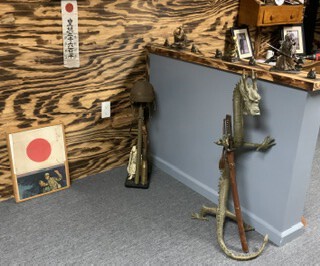


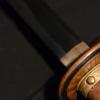
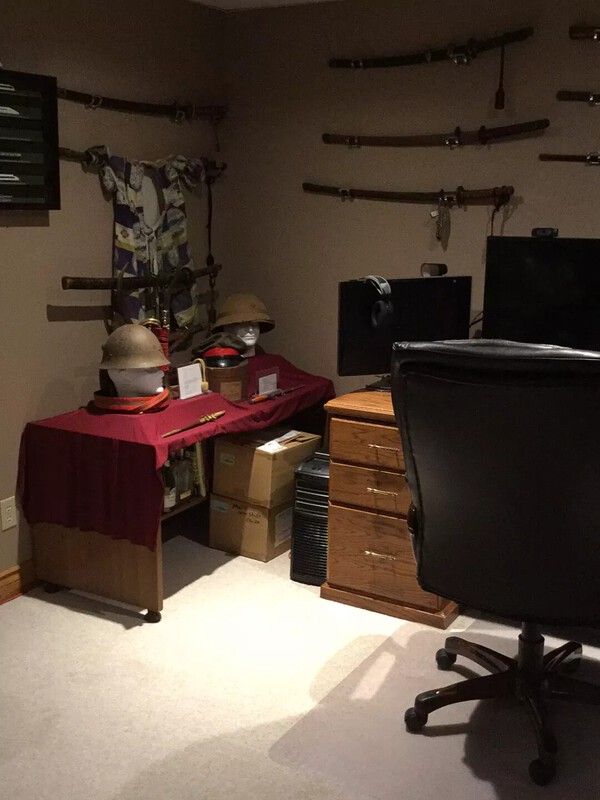
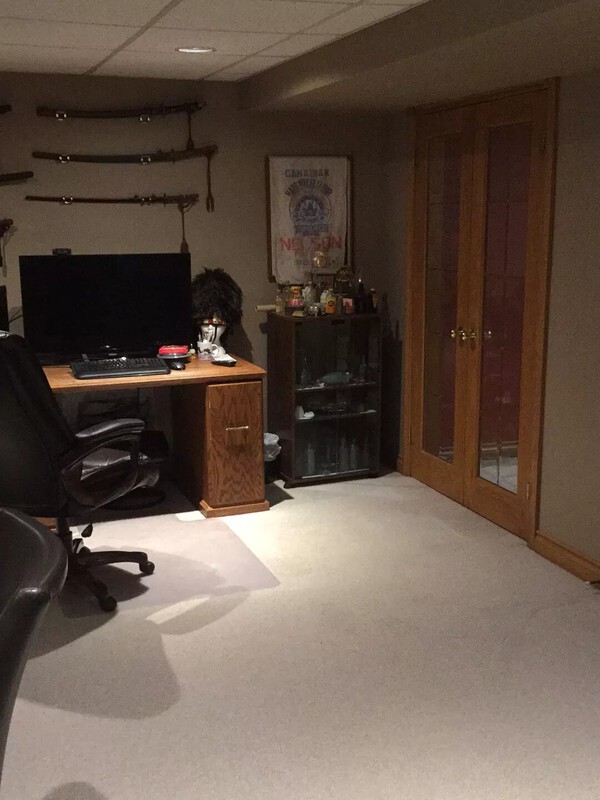

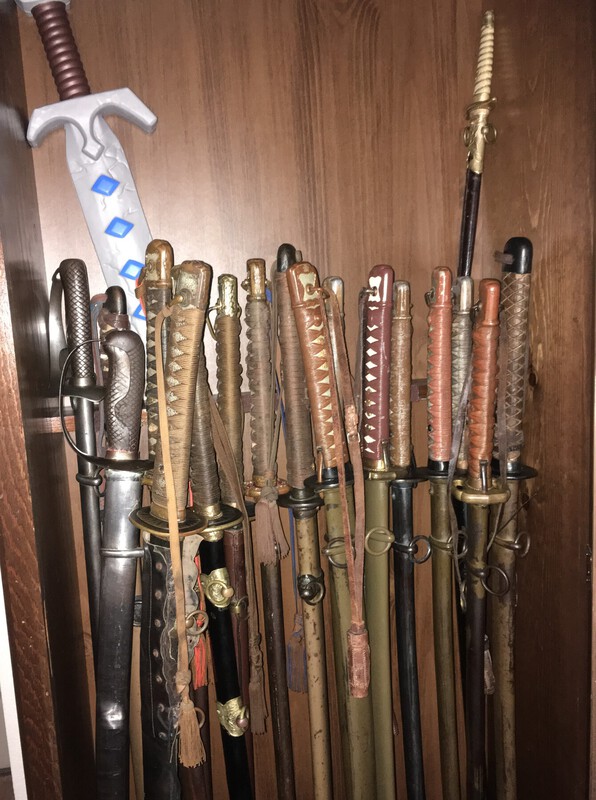
.thumb.jpeg.e1c8b00e8e5f5e7f6487c37542860699.jpeg)
